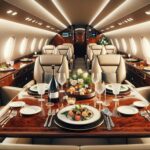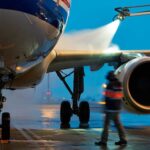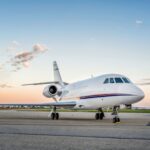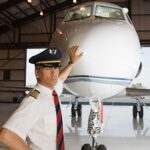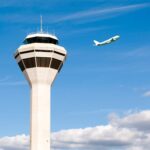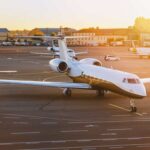
Key Takeaways
- Private jets generally have faster cruising speeds than commercial airplanes, with averages around 500-600 mph.
- Factors such as aircraft size, altitude, and operational efficiencies contribute to the speed differences between jets and regular planes.
- Cruising speed is not the only measure of time efficiency in air travel; factors like boarding processes and direct route availability also play significant roles.
- Understanding airspeed versus ground speed is crucial in comparing the actual travel times between private jets and commercial airplanes.
- While jets can offer faster point-to-point travel, the total time saved varies based on several factors including flight distance and layovers.
The Need for Speed: A Brief Overview
When we talk about flying, speed is often the first thing that comes to mind. It’s a symbol of efficiency, a measure of how quickly we can shrink the vast distances of our world. But when comparing the speeds of different types of aircraft, it’s important to understand that speed isn’t just about numbers on a dial; it’s about the interplay of design, physics, and purpose.
Jet Speed in Focus
Let’s zoom in on private jets. These sleek machines are built for speed and luxury. They cut through the skies at an average cruising speed of about 500-600 mph. But some models, like the Cessna Citation X+, push the envelope further, clocking in at speeds around 700 mph. Why so fast? Well, it boils down to a few key points:
- Size and weight: Smaller and lighter, private jets can slice through the air with less resistance.
- Engine power: They often have powerful engines relative to their size, giving them a significant speed advantage.
- Operational flexibility: Private jets usually fly higher than commercial planes, avoiding crowded airspace and taking advantage of thinner air.
Because of these factors, private jets can save you precious time, especially on shorter routes where commercial planes can’t reach their top speeds.
Commercial Airliner Velocity
Commercial airplanes, the workhorses of the sky, typically cruise at speeds between 460 to 485 knots (850 to 900 km/h). While this may seem close to the speeds of private jets, commercial airliners have different priorities. They’re designed to carry more passengers over longer distances efficiently and economically. This means that while they might not match the top speeds of smaller jets, they excel in cost-per-mile for large groups of passengers.
Now, let’s dive into the details and unpack the real differences in speed between jets and regular planes.
Cruising Speed Comparisons
Understanding the concept of cruising speed is essential. It’s the speed at which an aircraft operates most efficiently, and it’s a key factor when comparing different types of planes. Private jets, for instance, have cruising speeds that can range from 500 to 600 mph. In contrast, commercial airliners usually cruise at slightly lower speeds, around 460 to 485 knots, or 850 to 900 km/h. The difference may not seem like much, but over long distances, it adds up.
Maximum Speed Capabilities
When it comes to maximum speed, private jets often have the upper hand. They’re designed to reach their top speeds quickly and maintain them for the duration of a flight. This allows them to cover ground faster, particularly on shorter trips where commercial airliners don’t have the space to reach their top speed. However, it’s important to note that both types of aircraft are governed by speed restrictions for safety reasons, especially in busy airspace.
The Factors Behind the Fast: What Influences Plane Speed?

Aerodynamics and Engine Power
Aircraft speed is not just about the engine’s thrust. Aerodynamics play a crucial role. Jets are often sleek and streamlined, allowing them to cut through the air with minimal drag. Additionally, the power-to-weight ratio in private jets is typically higher than that of commercial planes, giving them a distinct advantage in acceleration and climbing.
Altitude and Atmospheric Conditions
Altitude is another major player in the speed game. Private jets can fly at higher altitudes where the air is thinner and there’s less drag, which translates to higher speeds. Moreover, at these altitudes, they can often take advantage of jet streams — rivers of air that flow from west to east — to boost their speed further.
Operational Constraints and Air Traffic
Operational constraints also impact speed. Commercial airliners operate on fixed schedules and must navigate through congested air traffic, which can limit their speed. Private jets, on the other hand, enjoy more flexibility, often flying direct routes and avoiding the traffic that can slow down larger commercial flights.
Comparing Convenience: How Speed Translates to Travel Time
Speed is important, but it’s the total travel time that really matters to passengers. Here’s where private jets can significantly outpace commercial planes, not just in airspeed but in the overall journey from door to door.
Beyond the Numbers: Total Journey Time
The headline speed of an aircraft doesn’t always tell the whole story. You must consider the time spent on the ground, too. For commercial flights, this includes check-in, security, boarding, and potential layovers — all of which can add hours to your trip. Private jets streamline this process, often allowing passengers to arrive just minutes before departure and eliminating layovers altogether.
Private Jets: The Speedy Alternative?
Private jets can indeed be the faster option, but it’s not just about the speed in the air. It’s about the agility and efficiency of the entire travel process. With fewer ground delays and the ability to land at smaller airports closer to final destinations, private jets can offer a significant time-saving advantage.
Boarding, Layovers, and Direct Routes
The convenience factor of private jet travel extends beyond speed. The absence of lengthy boarding processes and the elimination of layovers can drastically reduce total travel time. Additionally, private jets often have access to a wider range of airports, meaning they can fly direct routes that are simply not available to commercial flights.
The Speed Experience: Pros and Cons of Fast Flying

Flying fast has its obvious advantages, but it’s not without its trade-offs. Let’s explore the pros and cons of choosing speed over other factors in air travel.
Advantages of Jet Speed
Choosing a jet for its speed has several benefits:
- Time-saving: Faster flights mean you spend less time in the air and more time at your destination.
- Efficiency: Higher speeds can lead to more efficient travel, particularly on short to medium-length routes.
- Convenience: The ability to bypass traditional airport processes can significantly reduce stress and improve the overall travel experience.
These advantages make jets an attractive option for those who value their time and comfort above all else.
Downsides to High-Speed Travel
Speed isn’t without its drawbacks. The faster you go, the more fuel you burn, which can be both costly and environmentally unfriendly. High-speed travel can also be more taxing on the aircraft, leading to increased maintenance needs. Moreover, the luxury of speed comes at a premium price, with private jet travel being significantly more expensive than flying commercial.
FAQs
As an aviation enthusiast, you might have some questions about the speed differences between jets and regular planes. Let’s address some common queries to give you a clearer picture.
Most importantly, the answers to these questions can help you make informed decisions about your travel plans and what to expect in terms of speed and efficiency.
Is a jet always faster than a regular plane?
While jets are generally faster in terms of cruising and maximum speeds, there are conditions where this might not translate to a faster door-to-door travel time. For example, for very long distances, the speed advantage of a jet may be offset by the need for refueling stops.
Therefore, while jets are designed for speed, their advantage can be influenced by various factors such as distance, flight planning, and airspace restrictions.
Besides that, it’s important to remember that ‘faster’ is a relative term and depends on the context of the travel situation.
What is the average speed difference between jets and regular planes?
The average cruising speed of a private jet is around 500-600 mph, while commercial airplanes typically cruise at speeds between 460 to 485 knots (850 to 900 km/h). This difference might seem small, but it can significantly affect total travel time, especially when considering the agility of private jets on the ground.
Do weather conditions affect jet and regular planes differently?
Weather conditions, such as wind and turbulence, can impact all types of aircraft. However, because private jets often fly at higher altitudes, they may be above weather systems that would affect commercial airliners. Furthermore, the flexibility in flight planning for private jets allows them to adapt more readily to avoid adverse weather conditions.
That said, no aircraft is immune to the weather, and safety is always the top priority, regardless of the type of plane or its speed capabilities.
Can jets fly shorter routes than commercial planes?
Absolutely. One of the advantages of private jets is their ability to use smaller airports and runways that are inaccessible to larger commercial aircraft. This means they can often take more direct routes and land closer to the final destination, saving time both in the air and on the ground.
How much time can you actually save flying on a jet vs. a commercial plane?
The time saved by flying on a jet compared to a commercial plane can vary widely. On short to medium-length routes, the time savings can be significant due to faster cruising speeds and reduced time spent on the ground. For longer flights, the difference may be less pronounced but can still be substantial when factoring in direct routes and the lack of layovers.
Ultimately, the time savings will depend on the specific circumstances of the trip, including distance, locations, and the efficiency of the travel process for both types of flights.

